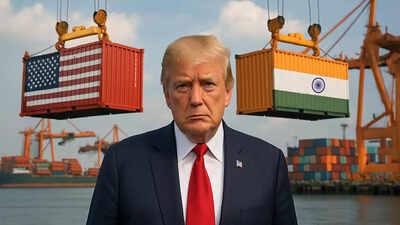In a move that has ignited fresh debate over the consistency of U.S. trade and foreign policy, the United States has imposed a steep 50% tariff on imports from India while maintaining zero tariffs on the European Union, despite the bloc’s continued purchase of Russian oil. This apparent double standard has drawn sharp criticism from experts and policymakers alike, raising questions about the strategic priorities and ethical considerations guiding America’s economic decisions. As the global community wrestles with the ramifications of Russia’s invasion of Ukraine, the contrasting treatment of India and the EU by the U.S. underscores the complexities-and contradictions-of enforcing sanctions and trade policies amid shifting geopolitical alliances.
US Imposes 50 Percent Tariff on India Raising Concerns Over Trade Fairness
The recent decision by the United States to impose a 50 percent tariff on select Indian imports has intensified debates around global trade fairness and protectionism. This move, perceived by many as a targeted strike against India’s growing export competitiveness, coincides strikingly with the U.S. maintaining favorable trade terms with the European Union, despite the EU’s continued purchase of Russian energy resources. Critics argue this selective tariff policy undermines the principles of equitable trade and weakens the credibility of American trade diplomacy on the world stage.
Industry insiders and trade experts point to several key concerns stemming from the new tariffs:
- Distortion of Trade Dynamics: Placing heavy tariffs selectively may disrupt established supply chains and disadvantage Indian exporters unfairly.
- Geopolitical Implications: The differential treatment raises questions about the strategic motivations behind tariff decisions.
- Potential Retaliation Risks: India’s government has warned that the tariffs could trigger reciprocal measures, threatening broader trade stability.
Below is a quick comparison of the U.S. tariff stance on major partners amid the ongoing geopolitical tensions:
| Trade Partner | Tariff Imposed by US | Key Context |
|---|---|---|
| India | 50% | Targeted against imports in steel and aluminum sectors |
| European Union | 0% | Continues purchase of Russian oil without tariff penalties |
| China | 25% | Existing tariffs amid trade war tensions |
Zero Tariffs on EU Despite Its Russian Oil Purchases Sparks Debate on Double Standards
The imposition of a 50% tariff on Indian imports while maintaining zero tariffs on European Union goods, despite the EU’s continued purchase of Russian oil, has intensified debates around geopolitical double standards in international trade policies. Critics argue that this selective tariff application reveals a troubling inconsistency in US trade strategy, especially as the EU remains one of Russia’s largest oil buyers despite official condemnations of the invasion of Ukraine. This move has sparked strong reactions from Indian trade officials and economists who call for a reassessment of the rationale behind the punitive duties amidst the complex energy dependencies that shape global markets.
The controversy underscores several critical issues:
- Energy Dependence: Europe’s reliance on Russian oil complicates the enforcement of sanctions and questions the fairness of tariff discrimination.
- Strategic Alliances: The US appears to leverage trade policies to reinforce political alliances, potentially sidelining economic logic in favor of diplomacy.
- Economic Impact: Indian exporters face significant challenges accessing the US market, which could disrupt long-term growth prospects and bilateral trade balance.
| Country/Region | Tariff Rate by US | Russian Oil Imports |
|---|---|---|
| India | 50% | Minimal/None |
| European Union | 0% | High |
Experts Call for Consistent Trade Policies to Address Allegations of US Hypocrisy
Trade experts and policy analysts are voicing concerns over the apparent inconsistency in the United States’ tariff strategy, highlighting a stark contrast between the 50% tariff imposed on Indian goods and the absence of tariffs on European Union imports, despite the EU’s controversial purchase of Russian oil. Critics argue that this selective approach not only undermines the credibility of US trade policies but also fuels allegations of hypocrisy, raising questions about the true objectives behind these economic decisions.
Experts emphasize the need for a more coherent framework, suggesting key measures such as:
- Establishing uniform tariff standards that apply equitably to all trading partners.
- Transparency in policy rationale to avoid perceptions of political bias.
- Engagement in multilateral dialogues to harmonize trade enforcement.
| Region | Tariff Rate | Key Import | Controversy |
|---|---|---|---|
| India | 50% | Steel & Electronics | High Tariff Alleged |
| European Union | 0% | Oil (Russian Origin) | No Tariff Despite Sanctions |
In Conclusion
As tensions over trade policies and geopolitical alliances continue to shape international relations, the stark contrast in the US tariff approach-imposing a hefty 50% duty on Indian goods while exempting the EU despite its purchase of Russian oil-raises questions about consistency and fairness in American economic strategy. This development not only underscores the complexities of navigating global partnerships amid conflicts but also signals the challenges ahead for India-US relations. Observers will be watching closely to see how Washington addresses these criticisms and whether a recalibration of its trade policies is on the horizon.




